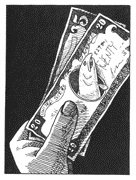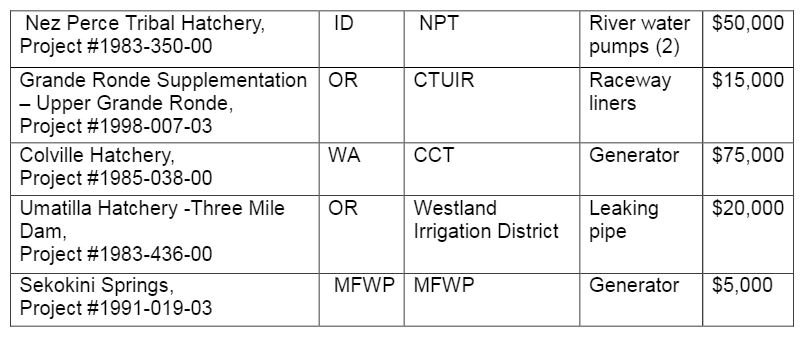Fish And Wildlife Project Cost Savings
A joint Council/Bonneville Power Administration workgroup has identified more than $600,000 in savings to apply to new and existing projects focusing on critical scientific uncertainties and emerging priorities in the Council's Columbia River Basin Fish
- January 18, 2017
- John Harrison

The Council and the Bonneville Power Administration have been working for nearly two years to identify cost savings in projects that implement the Council’s Columbia River Basin Fish and Wildlife Program, which Bonneville pays for, with the goal of “reprogramming” the savings to new or existing projects that address key scientific uncertainties identified in the program.
This month, Bonneville representatives and Council staff briefed the Council’s Fish and Wildlife Committee on savings identified by a joint Council-Bonneville work group totaling $651,915 in project spending in Fiscal Year 2017, which began last October 1. Additional cost savings are likely in Fiscal Year 2018, Bonneville staff reported.
According to a Council staff report, five projects comprise the identified cost savings. To date, the Council has recommended Bonneville apply $100,000 of the total to a habitat assessment above Chief Joseph Dam; $40,000 to northern pike suppression in Lake Roosevelt, the reservoir behind Grand Coulee Dam; and $200,000 to address operations and maintenance of infrastructure at fish hatcheries that Bonneville funds through the Council’s program. This month the Council sent a letter to Bonneville detailing those needs, which include the following:

About $310,000 of savings remains to be allocated. After reviewing the workgroup’s progress to date, the committee recommended that the full Council: 1) release a request for information to identify ready-to-implement Columbia and Snake River White Sturgeon assessments pertaining to one or more of the following topics: population status, spawning success, spawning habitat use, or susceptibility to predation; and 2) continue to work with Bonneville’s fish and wildlife staff to develop additional requests for information regarding projects for lamprey, cold water refuges in salmon and steelhead habitat, and possibly other emerging priorities identified in the Council’s program that could benefit from reprogrammed cost savings.
“Through the cost-savings workgroup, we are looking at how we can make projects like these better as a whole,” Council Fish and Wildlife Committee Chair Jennifer Anders said. “Conducing a policy review of a group of projects as a whole is a really good conversation to have. This may be setting a trend for future research.”
However, Bonneville staff, while supporting the cost-savings effort, told the Council some other projects with identified savings may be reprogramed to help pay for a National Environmental Policy Act (NEPA) analysis of federal hydropower dam operations in the Columbia River Basin that was ordered last year by a federal judge. The NEPA analysis, which Bonneville estimates will cost $40 million, is required by the court as part of the next (2018) federal biological opinion on hydropower operations to protect threatened and endangered species of salmon and steelhead. Bonneville would share the cost with the U.S. Army Corps of Engineers and the Bureau of Reclamation.
Bonneville staff said their priorities for future fish and wildlife expenditures, including implementing the Council’s program are 1) existing and evolving program priorities including biological opinions and the 10-year Columbia Basin Fish Accords, some of which expire in 2018; 2) on-the-ground work; 3) research and monitoring; 4) managing the ongoing costs of facilities associated with program implementation, such as hatcheries; 5) reconnecting flood plain habitats in the Columbia River mainstem; and 6) projects related to sturgeon and lamprey.


